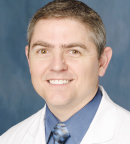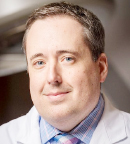CLINICAL TRIALS are vital for advancing cancer care for our patients. Each trial represents an unanswered problem for which researchers are committed to solving. Designing, funding, recruiting, and completing a trial are tremendous undertakings for each researcher, physician, patient, and organization. A common problem is failing to accrue enough patients to complete the trial.1

“Social media is a largely untapped resource for researchers to utilize for the purpose of successfully completing trials.”— Miriam A. Knoll, MD; @MKnoll_MD
Tweet this quote
Social media is a largely untapped resource for researchers to utilize for the purpose of successfully completing trials. Here are some ways physicians have harnessed the power of social media to improve the realization of their clinical trials.
Reaching Patients
IN 2018, Thomas J. George, Jr, MD, created and chaired the NRG Social Media Working Group (full disclosure: Dr. Knoll was a member) with the goal of designing a social media–based platform to help potential NRG research participants and researchers find each other, thereby improving enrollment in NRG clinical trials. Dr. George also serves as Chair of the NRG Colorectal Cancer Committee and is a member of the NRG Communications Committee; thus, he understood firsthand how important it is to utilize this new tool to improve participation in trials.

Thomas J. George, Jr, MD; @TGeorgeMD
Dr. George shared with me the following thoughts: “NRG Oncology recognizes the need to engage patients where they are—which today, often includes social media. To that end, the NRG Communications Committee, with valuable input from patient advocates, is developing a comprehensive pilot program of social media–based patient engagement for clinical trial awareness and participation.”2
Cathy Eng, MD, is a medical oncologist at MD Anderson Cancer Center and has experienced this as well. Dr. Eng originally created her Twitter account because she realized patients were surfing the Internet and social media for medical information and were not necessarily receiving accurate information. She uses her Twitter account to inform her audience about drug updates; changes in national treatment guidelines; clinical trial information; and other medical information for patients, caregivers, advocacy groups, and providers. More recently, she Tweeted about her newly opened multicenter trial (NCI9673) for the treatment of a rare cancer, metastatic anal cancer. Dr. Eng reports that she received many referrals from both patients and other physicians through social media channels, specifically regarding clinical trials and treatments for rare cancers.

Cathy Eng, MD; @cathyengMD
Reaching Principal Investigators
AS THE PRINCIPAL Investigator of NRG GU-006, Daniel Spratt, MD, recognized the unique opportunity that social media provides investigators like himself. When I interviewed Dr. Spratt about his professional use of social media, I was curious to know whether he had been contacted by physicians via social media; it turns out, he absolutely was. Many physicians have reached out to him directly asking for advice regarding how to open a trial, questions regarding site eligibility, clarification regarding inclusion criteria, and his opinion regarding who should go on the trial in light of newly published data. Others requested minor modifications to the trial, to allow broader participation based on new trial data to include treating the pelvic lymph nodes in the trial.

Daniel Spratt, MD; @DRSpratticus
In Dr. Spratt’s words: “Prior to social media, it was often challenging to know in a timely fashion what trials are available to open and what peoples’ enthusiasm for a trial was. Now the Principal Investigators of clinical trials can keep community and academic physicians immediately up to date. They can share the status of when the protocol will open, inform them of potential amendments, seek out opinions on the strengths/weaknesses of the design, and gauge the excitement of the social media community. Furthermore, it gives a direct and quick route for the Principal Investigator to answer questions about the trial and help everyone to understand the importance of the trial, the rationale for its design, and the background data leading up to it. Personally, social media has helped to raise awareness and support of NRG GU-006 across the United States and Canada, and the trial is accruing above the expected monthly accrual this past month. I am very appreciative of everyone’s support.”
“We need more physicians like the ones described here to use all tools available to help complete clinical trials successfully.”— Miriam A. Knoll, MD
Tweet this quote
Reaching Researchers
CLIFFORD ROBINSON, MD, is a radiation oncologist who conducted a phase I trial treating patients with noninvasive cardiac radiation therapy for ventricular tachycardia ablation. When the trial was published online,3 The New England Journal of Medicine (NEJM) tweeted about it.
This tweet was re-tweeted 392 times, and this high engagement is reflected in its rank of 99% of social media coverage for all articles, per the NEJM’s article metrics.4 Dr. Robinson and his colleagues were astounded by the response from the public, both in grand rounds, discussions, and via social media. He shared with me how valuable the feedback from Twitter was:
We’ve had tremendous engagement on Twitter with the results of our first 5 patients published in NEJM and the subsequent phase I/II trial of 19 more patients published in Circulation a couple weeks ago. The dialogue has been dead on—ideas about the best way to generate a target, novel methods of delivery (magnetic resonance imaging guidance, protons, etc), and concerns over toxicity. This last point in particular has been parlayed into a positive discussion about mutual-learning opportunities for the nascent cardio-oncology discipline. We’ve also had lots of direct messages via Twitter from physicians at other hospitals asking to participate in a multi-institutional trial we’re developing. Incidentally, a large part of the invite list for our recent Symposium for Noninvasive Radioablation meeting at Washington University came from myself and co-researchers mining our Twitter feeds for interested people who had engaged us. As a result, we ended up maxing our capacity in the conference without ever advertising!

Clifford Robinson, MD; @SBRT_CR
The previously mentioned physicians exemplify how social media helps researchers improve many aspects of clinical trials, including clinical trial design, patient enrollment, research dissemination, education, and collaboration. If you haven’t joined Twitter yet, get going! We need more physicians like the ones described here to use all tools available to help complete clinical trials successfully. ■
Dr. Knoll is Medical Director in the Department of Radiation Oncology at Hackensack Meridian Health Mountainside Medical Center and a radiation oncologist at the John Theurer Cancer Center at Hackensack University Medical Center in Hackensack, New Jersey.
For more information about the doctors interviewed in this report, visit https:// faculty.mdanderson.org/profiles/cathy_eng.html; ufhealth.org/thomas-j-george; radonc.wustl.edu/people/clifford-g-robinson-md/; and medicine.umich.edu/dept/ radonc/daniel-spratt-md.
Disclaimer: This commentary represents the views of the author and may not necessarily reflect the views of ASCO or The ASCO Post.
DISCLOSURE: Dr. Knoll reported no conflicts of interest.
REFERENCES
1. Stensland KD, McBride RB, Latif A, et al: Adult cancer clinical trials that fail to complete: An epidemic? J Natl Cancer Inst 106(9), 2014.
2. Knoll MA: How social media can advance cancer research. Forbes. Available at www.forbes.com/sites/miriamknoll/2019/02/15/can-social-media-cure-cancer/#180a89d87ace. Accessed April 15, 2019.
3. Cuculich PS, Schill MR, Kashani R, et al: Noninvasive cardiac radiation for ablation of ventricular tachycardia. N Engl J Med 377:2325-2336, 2017.
4. Metrics for Cuculich PS, Schill MR, Kashani R, et al: Noninvasive cardiac radiation for ablation of ventricular tachycardia. N Engl J Med 377:2325- 2336, 2017. Available at www.nejm.org/doi/metrics/10.1056/NEJMoa1613773. Accessed April 15, 2019.

